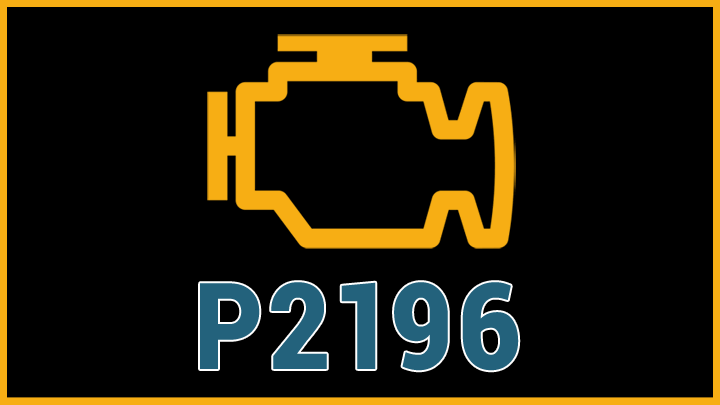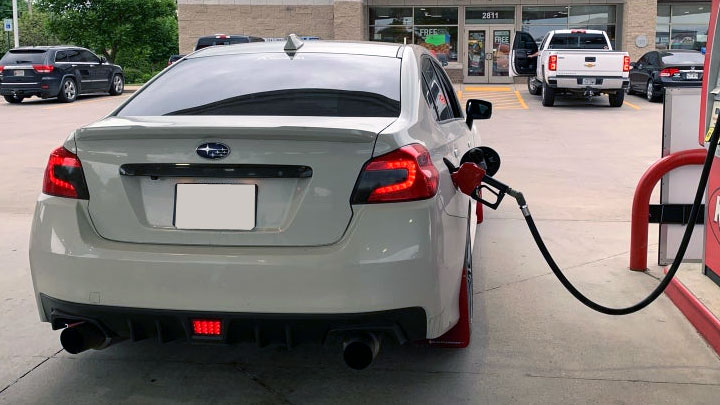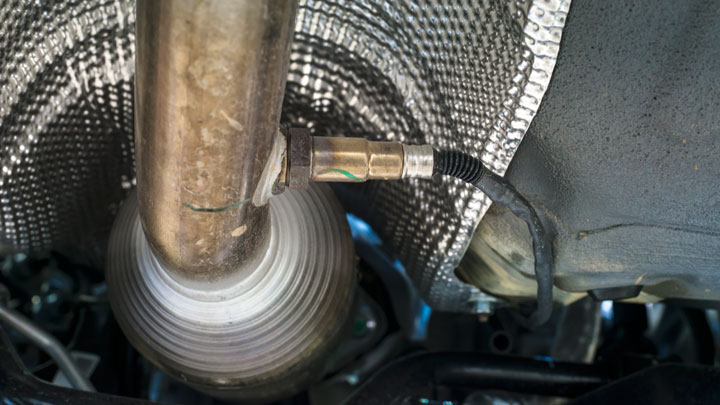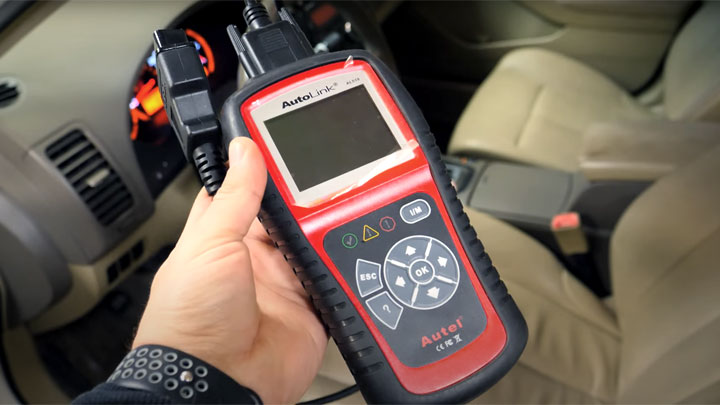P2196 Code (Symptoms, Causes, and How to Fix)
Uh-oh, your car’s check engine light is on, and you’ve traced it back to a P2196 code. But what exactly does it mean and more importantly, how serious is it?
Diagnostic fault code P2196 points to an issue with an oxygen sensor. Keep reading to learn what may have caused it, the symptoms you can expect to encounter, and how to properly troubleshoot and fix the issue.

What Does Code P2196 Mean?
Diagnostic fault code P2196 is indicative of abnormally rich feedback values within the bank 1 exhaust stream, as recorded by the bank 1, pre-catalytic oxygen sensor, and interpreted by the affected vehicle’s ECM/PCM. Furthermore, the rich readings persist, even when operating conditions would suggest that their accuracy is in question.
The accuracy of such values is vital to efficient engine operation, as short/long term fuel trims are partially derived through the rationalization of O2 sensor feedback.
In the case of diagnostic fault code P2196, the feedback from the oxygen sensor in question (sensor #1 on bank #1), appears to indicate over-fueling within bank one of the affected engine, despite other feedback-related evidence to the contrary.
Related: Code P2195, Code P2270
Symptoms of Code P2196

As you might have guessed, there are a number of secondary symptoms that often accompany active faults, such as P2196. These symptoms, when recognized, can provide helpful clues that can be traced to assist in diagnosing the underlying issue at hand.
Here are a number of the most common symptoms associated with DTC P2196:
- Illuminated check engine light
- Decreased engine performance
- Heightened fuel consumption
- Heavier exhaust output
Causes of Code P2196

Diagnostic fault code P2196 can be caused by one of a host of potential underlying issues. Though determining the exact cause of your vehicle’s fault might seem daunting, familiarizing yourself with the list of failures below would serve as a beneficial place to start.
The following are several of the most common causes of DTC P2196:
- Faulty O2 sensor
- Damaged wiring to bank 1 oxygen sensor
- Exhaust leak
- Vacuum leak
- Improper fuel pressures
- Defective MAF sensor
- Compromised ECM/PCM
Is Code P2196 Serious?
Diagnostic fault code P2196 is not typically regarded as being very serious in nature. This is not to say that this fault should be disregarded in any way, as extended O2 circuit failure can lead to consequences over time if ignored.
This is especially true in the sense that O2 circuit irregularities can noticeably skew an engine’s air/fuel ratios.
Additionally, a number of secondary symptoms often accompany diagnostic fault code P2169. One of the most noteworthy of these symptoms centers around a noticeable reduction in engine performance. One might also notice that their vehicle’s fuel economy begins to suffer, thereby causing additional pain at the pump.
Regardless of any diagnostic fault code’s severity, the fault in question should be diagnosed and addressed as soon as possible. Diagnostic fault code P2196 is certainly no exception to this rule.
Taking a proactive stance toward repairing the root cause of this fault will increase overall vehicle reliability, while also restoring fuel economy. Those in need of a little additional assistance in this regard should contact a trusted service center within their area.
How to Fix Code P2196

The following steps can be used to assist in diagnosing and repairing most P2196-related issues. It’s highly recommended to consult factory-specific service literature for your exact model of vehicle, before attempting any repairs of this type.
#1 – Check for Additional DTCs
Before delving into the diagnostic process, be sure to check for the presence of any additional diagnostic fault codes that have been actively logged. Any faults of this nature should be further explored before proceeding.
#2 – Visually Inspect O2 Sensor
Begin by carefully inspecting your vehicle’s oxygen sensor (bank 1, sensor 1) for signs of damage. The confirmation of damage that is visually obvious will necessitate replacement.
#3 – Check for Wiring Defects
Next, verify that the affected sensor’s wiring pigtail and connector are in satisfactory condition and that all connector pins are free of corrosion. Any damage of this sort that is found should be repaired before proceeding.
#4 – Inspect MAF Sensor
It is also wise at this point to inspect your vehicle’s MAF sensor for signs of damage or fouling. If necessary, clean the engine’s MAF sensor, using only approved cleaning agents.
#5 – Verify Proper Fuel Pressure
You should also verify that your engine’s fuel pressure falls within specification at idle, and when under a load. These pressures can be recorded with the use of a quality analog test gauge, affixed to the engine’s fuel rail.
All pressures that are recorded, should be compared to those specified by your vehicle’s manufacturer.
#6 – Rule Out Exhaust Leaks
It will now be necessary to check the the vehicle’s exhaust system for any leaks. This can be easily done using an application-specific smoke machine. Any leaks that are identified should be repaired immediately.
Identify Vacuum Leaks
If fault P2196 persists, it will be necessary to check your vehicle’s engine for vacuum leaks. This too, can be accomplished with the use of an automotive smoke machine.
Alternatively, an unlit butane torch can be wanded throughout the vehicle’s engine bay. A sudden uptick in RPM would indicate the source of a vacuum leak.
Test O2 Sensor
If you have yet to locate the source of your vehicle’s P2196 fault, the #1 O2 sensor (in bank #1) is likely to blame. You’ll want to follow the qualification procedure outlined by the vehicle’s manufacturer, which can be found in model-specific service literature.
Out-of-specification readings would necessitate replacement, while permissible readings would cast doubt upon the integrity of the O2 sensor feedback circuit, or the ECM/PCM itself. Further testing in this regard should also be conducted in strict compliance with manufacturer recommendations.
- 4 Causes of Smoke Coming Out of Your Car Vents - Jun 20, 2024
- 6 Reasons Why Your Car Won’t Start After Getting Gas - Jun 17, 2024
- P2196 Code (Symptoms, Causes, and How to Fix) - Jun 13, 2024
